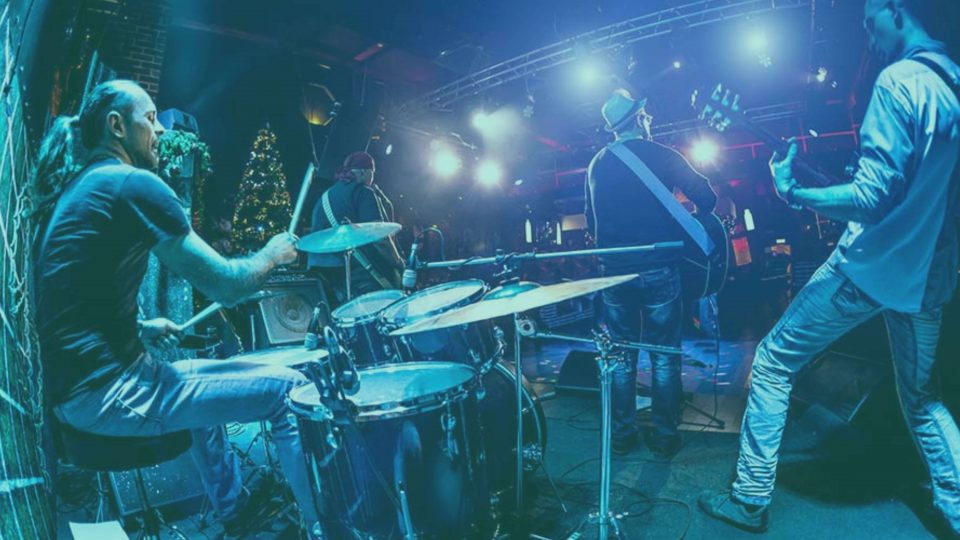Branding Yourself as an Artist and Showing the World What You’re All About
Branding yourself as a musician is equally as important to your career as the music you make. What is a brand? A brand is a message you send about yourself, and it’s what converts listeners into fans. Branding requires content, both music and other forms of content, that tells your story for people to consume.
Branding as a musician, then, is the story you tell the world about what you’re doing. We communicate this in everything we do. Our music acquires listeners, but our brand acquires lifelong fans. People buy our persona as well as our music.
A brand isn’t a business, but a business does build a brand that sells its products. It constructs a public message that people can get behind to exchange their consumer money for the business’ products. For example, Supreme is a business that sells clothes, and they have built a brand that targets skateboarders and hip hop fans in order to sell premium clothing that is alternative and “underground”.
If you’re not yet thinking about branding then it’s high time that you start. In our digital world, it’s vital that you understand what a brand is, as explained above, and how you can create a brand that’s true to who you are and portrays the story that you want your fans to know you for.
Identify Your Unique Selling Point
The first step that every business undertakes is identifying its unique selling point. Supreme produce minimal style clothing that is “hip”, if that means anything, for all seasons.
All musicians are people, so branding yourself as an artist requires you to understand yourself and your unique characteristics that nobody else has. Your unique selling point should be something that your fans should only be able to experience with you. It could be a unique sound you’ve spent time crafting or maybe your unique style options that Supreme can’t match. It could even be the unique way that you interact with your fans.
Think outside of the box. Your music is inevitably different from everyone else’s, whether in major or minor ways, so think about what else you do that makes you unique.
Start Crafting Your Story
Before you post anything online, we recommend you sit down with a pen and paper (or your computer and keyboard) and draft your story. Your story will eventually become your music brand. Write a vision statement that captures both your achievements in music and other areas, as well as what you want to achieve in music and your other aspirations in the future.
We suggest including your other aspirations because you’ll probably find more out about your unique selling point by merging all of your interests!
When you think your vision statement encapsulates everything about you that it needs to, begin converting it into a brand idea. But don’t think about it too hard else, let it come naturally. If it takes a bit of time then let it happen.
Think about how your vision statement makes you feel and how you want it to make your fans feel. Reverse engineer everything you’ve written down so you can craft a story that fans can relate to. Who is your music for? Why do you make this music and not other types of music? What has influenced you to be where you are now?
If you make a variety of genres, that adds to your unique selling point – it doesn’t remove from it.

Build a Brand Image
Fans will see everything about you over the internet, so the image you present with your story is crucial. Your brand image includes how you dress, how you interact with other artists as well as fans, and how you market yourself.
It also includes how you present yourself in interviews, so always be on your toes!
Most of the time, your music won’t sell itself. Finding new music is incredibly easy now, so you need to stand out from the thousands of other artists in the same position as you.
Your brand image is crucial to consider when you’re designing a logo. Your logo is a message all on its own. Would an indie-pop band use features that our minds perceive as aggressive? Like a fist? Or lightning?
Probably not. They’d probably use colours that emote emotions such as nostalgia, love, happiness, etc. So, before you have a logo made – make sure you understand what message you were not your logo to present. Make sure your logo fits inside your chosen genre of music, and make sure it says about you, as an artist, what you want it to.
Keep in mind that colours represent different emotions. If your inspiration is the loss of a loved one then blue may be fitting as blue tends to represent grief. Red is typically a good colour for aggressive music because red represents anger (as Iron Maiden knew).
Be Consistent
It’s vital that you upkeep consistency in more ways than one.
For example, make sure you use the same logo across all platforms. This doesn’t necessarily mean using your logo as a profile photo at all times. You can use a professional shot of yourself wearing a style of clothing you want fans to associate with your brand. But, for consistency, it will pay to feature your logo somewhere in the image – and on every image, you upload, for that matter.
But consistency goes deeper than just visual content.
Communciate Your Brand With an Online Brand Strategy
First of all, you should create a realistic social media calendar. By realistic we mean a schedule that you can achieve with low to no risk of missing a single post. To help you nail this it’ll be beneficial to plan your weeks. And we mean to plan your entire life week by week, one week at a time.
Content marketing for musicians is an effective way to build your audience, especially on TikTok. Content marketing is about being as personable as possible. Showing people the human side of your digital music. By showing them you will allow people to actually get to know you.
Offering content that advises your fans with what to-dos, and what not to-dos, showing them your life “behind the scenes”, and getting your followers involved in what you do via polls and other means is a strong method to make your fans feel included.
As well as social media, you can use email marketing to get in touch with your fans.
Emails are direct access to your fans. Platforms like Mailchimp allow you to store an unlimited amount of email addresses that you can contact at the click of a button with new music updates or general updates about anything you want them to know about.
But make sure you have a plan about what you want to post and when you want to post it. It’s easy to feel deflated when you lose control of your marketing strategy. Any piece of content should have a specific purpose, so make sure it’s always in line with your brand strategy.
You’d be very surprised about just how many fans wait on your posts. Don’t miss a deadline!
Expand Brand Awareness by Collaborating
Put yourself in front of a new audience by collaborating with your fellow musicians.
Work with artists and producers who operate in similar or the same genre of music because these artists will, undoubtedly, have followings made up of fans who have similar or the same interests as your existing fans.
Coming back to our point about consistency here, make sure your logo is visible to the new audience at every opportunity. Make sure a link to your own profile is also available.
Whether you’re selling music, samples, or skateboards… you need a story to sell them. Whatever your story may be, it is your brand. Here’s our story:
We at Mixxed work with a growing number of sample labels and contributors to provide you with an affordable sample subscription service that’s more accessible than any before.
You’ll have access to our growing catalogue of thousands of loops, one-shots and sound effects that you can browse, download and keep forever for less than $3 a month.
Sign up today to find your sound!
